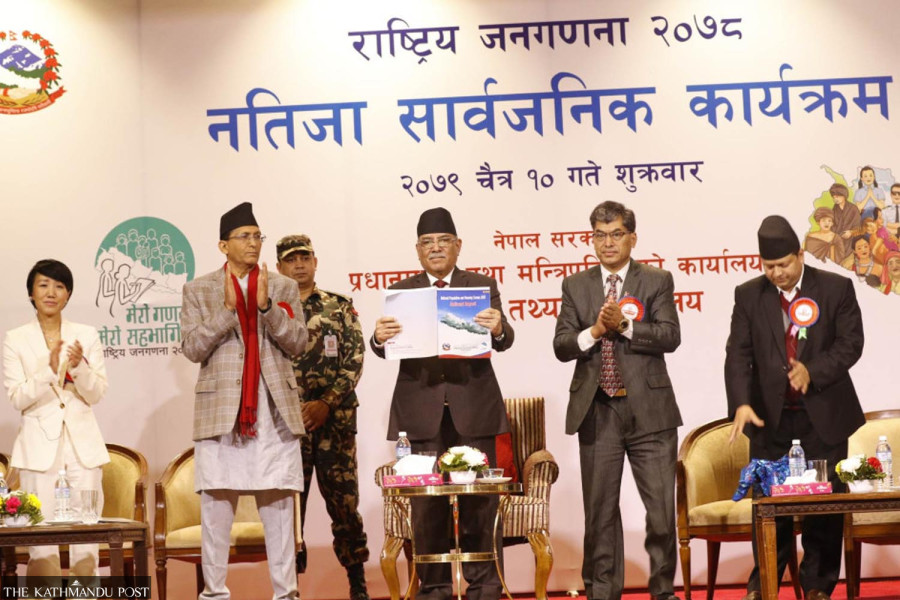National
Nepal makes public final data of 12th national census
The latest census, conducted in November 2021, puts Nepal’s population at 29,164,578.
Post Report
Nepal on Friday published the final data of the 12th national census conducted on November 2021, putting Nepal’s population at 29,164,578.
Prime Minister Pushpa Kamal Dahal announced the final results of Nepal’s latest census amid a programme held in Kathmandu.
The latest census was the first since the country adopted federalism, with seven provinces and 753 local units.
The final data has put the number of men in the country as 14,253,551 which is 48.98 percent of the total population and women constitute 51.02 percent (14,911,027) of the total population. Similarly, the population of sexual and gender minorities is 2,928 which is 0.01 percent of the total population.
The country’s population in the 2011 national census was recorded at 2,64,94,504.
As per the report, the population has increased at the rate of 0.92 percent in the last 10 years.
According to the 2021 census, Bagmati Province has the highest population of 6,120,000 which is 20.97 percent of the total population. Madhesh Province comes in second with 6,110,000. The province with the least population is Karnali with 5.79 percent of the total population living in the province.
Geographically, Tarai has the highest population with 15,634,006 people living in the plains which is 53.61 percent of the total population. The hill region has a population of 11,757,624 which is 40.31 percent while the mountain region is home to 6.80 percent (1,772,948) of the total population.
As per the final data, there are 7,552,066 houses in the country. Of them, 71.7 percent is used for residential purposes, 10.1 percent is used as animal sheds and food shelter, 6.3 percent of the houses are unused, 5.9 percent of the houses are used for other purposes like kitchen among others.
Likewise, 3.1 percent of the buildings are used for business purposes, 1.1 percent of the house are used by educational institutions, 0.4 percent each is used by industries and organisations including government offices. Hotels and lodges are operated in 0.3 percent of the houses while 0.2 percent of the houses are used by the health sector and bank and financial institutions operate on 0.1 percent of the total houses.
The census has put the country’s literacy rate at 76.2 percent an increase of 10.8 percent than the last census. The literacy rate has been determined after collecting the educational status of people aged 5 years and above. The number of people aged 5 years and above is 26,675,975 million and among them 20,341,623 23 million people know how to read and write. As per the census, the literacy rate of male is 83.6 percent while the female literacy rate is 69.4 percent.
As of 2021, the urban population, those residing in metropolitan, sub-metropolitan and municipalities is 66.17 percent while the population in rural municipalities is 33.83 percent of the total population.
According to the summary of the final results of the national census, 2.2 percent of the total population has some form of disability. Out of the total population, 647,744 have some form of disability. Among them, 351,301 are men and 293,443 are women.
As per the latest census 2,190,592 members from 1,555,961 families were residing outside of the country. Out of which 1,799,675 (82.2 percent) are men and 390,917 (17.8 percent) are women.




 5.55°C Kathmandu
5.55°C Kathmandu






%20(1).jpg&w=300&height=200)






